Fae/they/she✨Entomology student
Last active 4 hours ago
Don't wanna be here? Send us removal request.
Text
Btw thanks to you guys for enjoying my bugs ^^ it like actually means a lot to me even if it's my stupid entomology fixation that you guys r willing to listen to me lmao
17 notes
·
View notes
Text
i refuse to defend my favorite characters. They did that horrible thing bc they suck really bad
74K notes
·
View notes
Text
While entomology is trending: a legit list of bug projects worth donating to/participating in.
Did not have "frozen bug man asking to borrow an outlet is a potentially fraudulent misogynist" on my entomology bingo card for this year, so trying to do something good with the fact that entomology is currently trending, here's a list of what SHOULD BE (I am no longer confident) good bug projects to donate to/participate in if you feel so inclined! Please also add good bug projects if you know any! Click the names of the institutions to find ways to donate.
The Frost Entomology Museum - Part of Penn State University, which has started up its public insect fair again this year! The museum has a "Hexapod Haiku Challenge," and I'm screaming.
The Lost Ladybug Project - Fair warning that the main webpage for it looks mildly sketch, but I can find it in multiple places that it's a real project of Cornell. It has a citizen science component where you can photograph specimens for them (no killing bugs)!
The Smithsonian Natural History Museum Department of Entomology
The Big Bug Hunt - An international project that appears to have the backing of multiple universities. It's a citizen science project to track the movements of bugs that are both detrimental and beneficial to crops. I am honestly not sure how this will affect the bugs though because the point is to protect home gardeners' crops from them.
University of California Riverside Department of Entomology
Cornell University Department of Entomology Giving Page - There's a tab at the right with three different projects of theirs: The Cornell University Insect Collection Fund, the Lost Ladybug Project Fund, and the Pollinator Health Research Fund
Michigan State University Department of Entomology - They have A BUNCH of named entomology funds you can donate to, or you can give them money that they can use flexibly.
Entomological Society of America
5K notes
·
View notes
Text
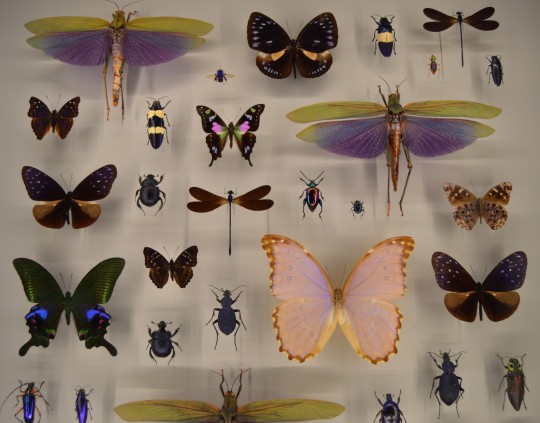
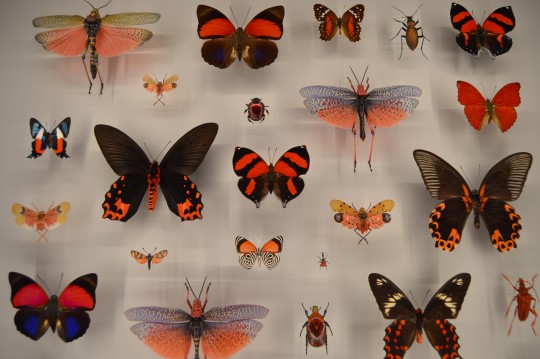


Some of my favorite showcases of insects arranged by color from the Montreal Insectarium
39K notes
·
View notes
Photo
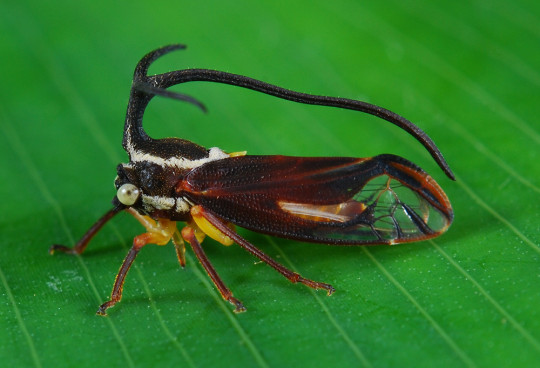

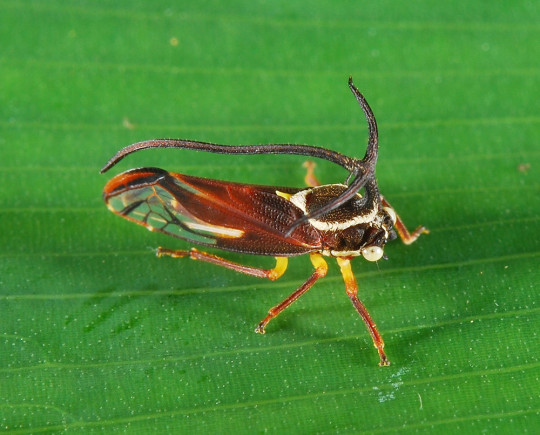
Treehopper, Stylocentrus ancora, Membracidae
Photographed in the Colombian Amazon by Art Anker // Facebook
Shared with permission; do not remove credit or re-post!
2K notes
·
View notes
Text
i learned that there's a Japanese beetle that when eaten by a frog will haul ass through its digestive system and escape out the back end unscathed (x)

102K notes
·
View notes
Text

“…did someone say something about an insect collection?”
Behold. Quarter project for my lab:)
If everything’s ID’d correctly, I should have 56 families here! (& for the sake of this lab 45+ is an automatic A so. Hell yea)
Probably my favourite course I’ve taken in university so far!!
3 notes
·
View notes
Text

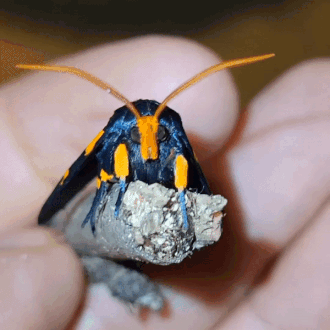
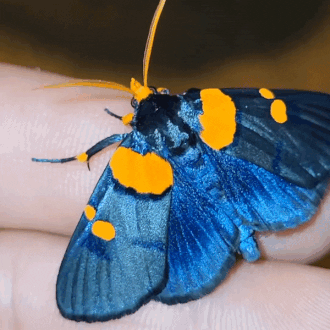
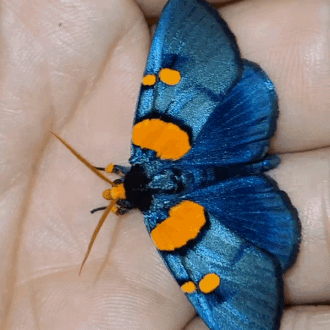
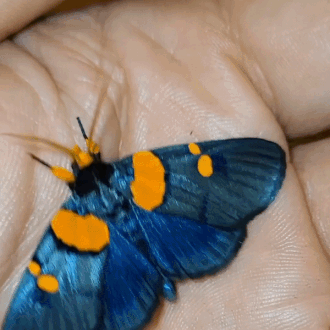
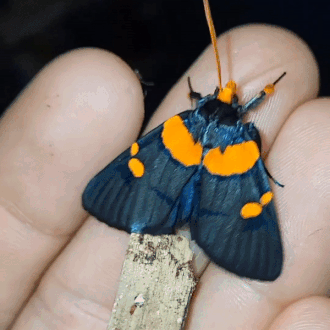
african peach moth (egybolis vaillantina) | source
39K notes
·
View notes
Text
omg ok so i was trying to look up how to sex a centipede and one of the first results was an obviously ai-generated article with these absolutely incredible images of “centipedes” lmao. they are so hilariously bad i just had to share
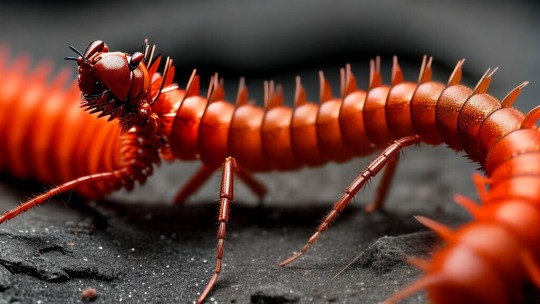

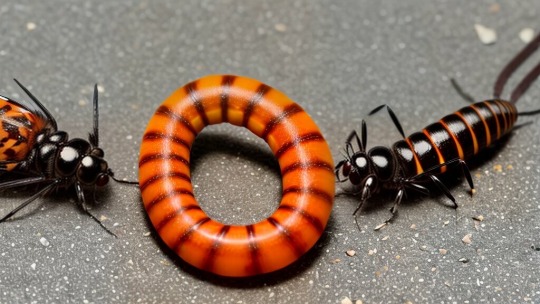
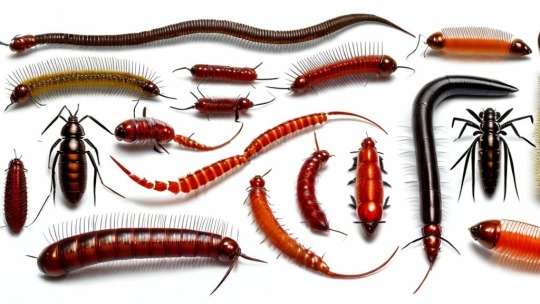
6K notes
·
View notes
Text
"Culinary students will literally have a spaghetti due at 8" "Art students will literally turn in some shapes at the end of the week" Well I have 40 insects due next month. If you even care.
54K notes
·
View notes
Text
Seeing this leafcutter bee absolutely made my day.
Leafcutter bees are solitary and use these leaf circles to build their nests. The leaves are formed into small cups, into each of which pollen/nectar and an egg are deposited, and then another leaf section is used to seal up the cell.
895 notes
·
View notes
Text
Yes and no.
Yes, people breed & sell bees for commercial purposes. Buying these packages is how a lot of beekeepers, both commercial & hobbyists, get started. Yes, some of those bees get shipped across the country for the sake of agriculture—this is called migratory beekeeping, & it actually works pretty well for the pollination of certain plants, almonds for example.
Almonds are entirely dependent on honey bees, except almonds bloom from early February to March, at which point the overwintered bees would be too young. So beekeepers feed them a ton, ship them across the country, hold them in shipping yards, & then the hives (around 1.5 million of them) are allocated to farms. Pollination takes around a few weeks, depending on the weather.
No, the pesticides don’t kill off most of the honey bees—native bees are a different story though. The U.S. at the moment (as far as I’m aware) primarily uses neonicotinoids, which some plants systematically secrete; they are less toxic than older pest control chemicals, but are always present in the environment in low levels when used, meaning beneficial insects deal with chronic exposure; they are toxic to native bees. The older chemicals that were used were highly toxic with a LOT of off-target damage, including to humans—though less off-target damage to honey bees, as the old chemicals would only be present for short periods & the bees could be moved temporarily; these had MAJOR off-target damage to native bees. Either way, native bees are suffering.
I went into detail on this in another post but honey bees (Apis mellifera) are INVASIVE & frequently outcompete native bees, so if we’re trying to protect bee biodiversity we need more attention & funding for native bees. In terms of neonics on honey bees, there don’t seem to be any notable effects from foraging neonic-treated plants, but pretty much all the information we have so far is from short-term studies, so we really don’t know about what happens to them long-term yet.
Honey is sold in several forms—there’s liquid honey (typically wildflower, as in the bees weren’t confined to one particular flower; the plants they pollinate can greatly affect the flavor), comb honey (popular in the Middle East & the purest form of honey), creamed honey (very popular in Canada& Europe; basically just softly granulated honey) & honey blends/artificial honey (which have very little actual honey & a bunch of other added sweetners); most grocery stores will have liquid honey, & if it’s a different type it should be labeled.
Unironically, vegans need to be advocating for more and better sheep, llama, and alpaca farms. Wool is one of the best fabrics we have in terms of versatility, longevity and most importantly, insulation. Even wet, it retains 80% of it’s insulation potential.
AND IT DOESN’T SHED MICROPLASTICS
164K notes
·
View notes
Text
Sideblog where i post about bugs! Feel free to send asks, & I will answer questions to the best of my ability!
#kat talks bug bio & #faebug thoughts are the tags I use for my own actual posts, most of this page is just reblogs:)
0 notes
Text
I don’t mean to derail the post, as I absolutely agree with much of what’s being said—just want to go a bit into bee bio (as an entomology student who just finished a class on bees).
We’re talking about honey bees here, & by far the most widespread, popular honeybee is Apis mellifera, the western honey bee; there are several sub-species, & most of their native range is in Africa, with some in Europe as well. The European varieties happen to store the most honey, & sub-species Apis mellifera lingustica (the Italian honey bee) are said to be the gentlest & least users of propolis, & have become the most popular species for beekeeping in both Europe & the U.S. (first imported in 1859). They are, in fact, invasive to the U.S.
While bee populations are declining, however, Apis mellifera are not in any immediate danger. They are a highly important species both agriculturally & economically, & humans are not going to let them die out if they have any say in the matter. & yes, while they are important pollinators (almonds are entirely dependent on mellifera), there are many, many other species of bees—lesser known species that are genuinely threatened with extinction, between habitat loss & being outcompeted by mellifera. Bee populations are declining, but those in decline rarely get any media attention or real funding—& while mellifera may be optimal for honey, they are often over-relied upon, & in terms of pollination native bees are often on par, sometimes better. If we really want to preserve bee biodiversity, native bees need more awareness & funding.
“[…] bees do, indeed, make too much honey for themselves. That’s why they swarm. A nest gets too full of comb, or they outgrow it, and they just dip” Several notes here.
First of all, swarming. Swarming is how bee colonies reproduce. Swarming is a bee colony splitting into 2 or more pieces, typically in the spring & sometimes with a 2nd spike in the fall. It has nothing to do with the amount of honey in the nest. The queen will lay a bunch of eggs, & around 15-20 of those will be reared into potential new queens. The old queen will leave along with about 70% of the hive’s youngest bees, each carrying about 40% of her body weight in honey (as reserves to get the new hive started). That group leaves the hive, temporarily settles nearby (typically on a tree branch), & waits for their scouts to decide upon & lead them to the location that will become their new home. Meanwhile the original hive’s remaining bees (about 40% of the original colony size, mostly older bees now) are left with lots of emerging brood & around 15-20 potential queens, who essentially just kill each other until there’s only 1 left (& that one is the new queen).
Secondly; bees can outgrow their nests—but as far as I’m aware “too full of comb” isn’t a reason. More like they ran out of comb, or the comb is too full. When bees produce too much honey, or the queen lays too many eggs too fast (queens can lay well over 1,000 eggs in a day, & can fill up the brood zone VERY quickly), the hive can become “honeybound” or “broodbound”; while different areas of the nest are designed for certain things, one way or another the nest can become full, leaving no room for honey production, & no room to lay more eggs. This slows both colony growth & honey production, which beekeepers (understandably) don’t want. The hive isn’t too full of comb, the comb itself is too full—at max capacity—& to fix this issue, beekeepers would add another empty super (the hive body is referred to as a super; essentially, the beekeeper gives them more space to work with). Without the added space, they could potentially leave.
Lastly, “[…] where they can be checked for parasites or diseases that would destroy the colony or even an entire apiary […]” honestly doesn’t always work. Parasites & diseases, if not caught early & treated actively, can have detrimental, irreversible damage.
The current biggest threat to Apis mellifera are parasites called Varroa mites, specifically Varroa destructor. They were originally a pest to Apis cerana, the Asian honey bee, but as mellifera was moved into cerana’s territory, cerana’s pests moved into mellifera’s. Varroa’s life cycle involves 2 stages, phoretic (living on the body of an adult bee) & reproductive (mite sneaks into soon-to-be-capped brood cell, & lays eggs which emerge. Mother mite opens a wound on the baby bee larva & keeps it open while babies feed. Little mite siblings mate, mated females leave with newly emerged bee). The phoretic stage on its own isn’t a huge issue, but the bees who were stuck with reproductive stage mites emerge lighter in weight, with less nutrients in their blood, with their lifespan significantly decreased & immune system compromised. On top of that, the mites are also virus vectors, leaving many bees emerging with viral infections—& those that emerge with DWV (deformed wing virus) won’t live more than a few days at most. Varroa mites naturally double their population size monthly, & if a nearby colony falls & those infected bees drift, the colony still standing could have a sudden massive Varroa influx. The 2 combined can lead to UNPREDICTABLE growth rates. There is no officially set threshold for treatment, & Varroa can be treated either by the removal & freezing of drone (male) brood comb (drones have longer development time, & freezing the brood will kill them), which has to happen multiple times with consistent mite monitoring, or via chemical control (miticides), which must be used with extreme caution (all are toxic substances) as they can prove harmful to both humans & bees; additionally, with the nature of chemical control, the mites will develop strong resistance over time, making the use of newer, likely stronger chemicals necessary.
Among other threats to mellifera are various diseases, some of which are thus far incurable, or will rapidly become so. American foulbrood disease is caused by bee larva consuming bacterial spores, which not only kill the individual but can (& will if left unnoticed/untreated) quickly spread to the rest of the hive. AFB spores remain viable longer than a beekeeper will live. Bees are fed vet prescribed antibiotics to prevent AFB (& EFB, European foulbrood, though it’s not nearly as lethal or contagious), & even then there have been several cases of resistance. AFB can become so severe that in some places, beekeepers are required to burn all of their equipment to stop it from spreading further. Other diseases, such as Sacbrood & Nosema, are thus far incurable, or cured with little success/very unreliably. At least 23 viruses have been identified so far & while most seem relatively harmless they can become pretty bad when a bee is immune-compromised (like ones that dealt with Varroa!). There’s really not any commercial treatments available for bee viruses yet, either.
In any case, previously stated I am very much in support of your argument! Just wanted to clear some things up in terms of bees, specifically, since 1) this is information I have very recently been studying in detail & 2) generally speaking, primary education doesn’t go very far with insect biology. I absolutely love insects & like to share what I’ve learned when the opportunity presents itself! Everything I’ve addressed here comes directly from the notebook I kept for one of my university’s entomology courses, this one focused specifically on bees (primarily Apis mellifera), so the information should be fairly accurate.
Unironically, vegans need to be advocating for more and better sheep, llama, and alpaca farms. Wool is one of the best fabrics we have in terms of versatility, longevity and most importantly, insulation. Even wet, it retains 80% of it’s insulation potential.
AND IT DOESN’T SHED MICROPLASTICS
164K notes
·
View notes
